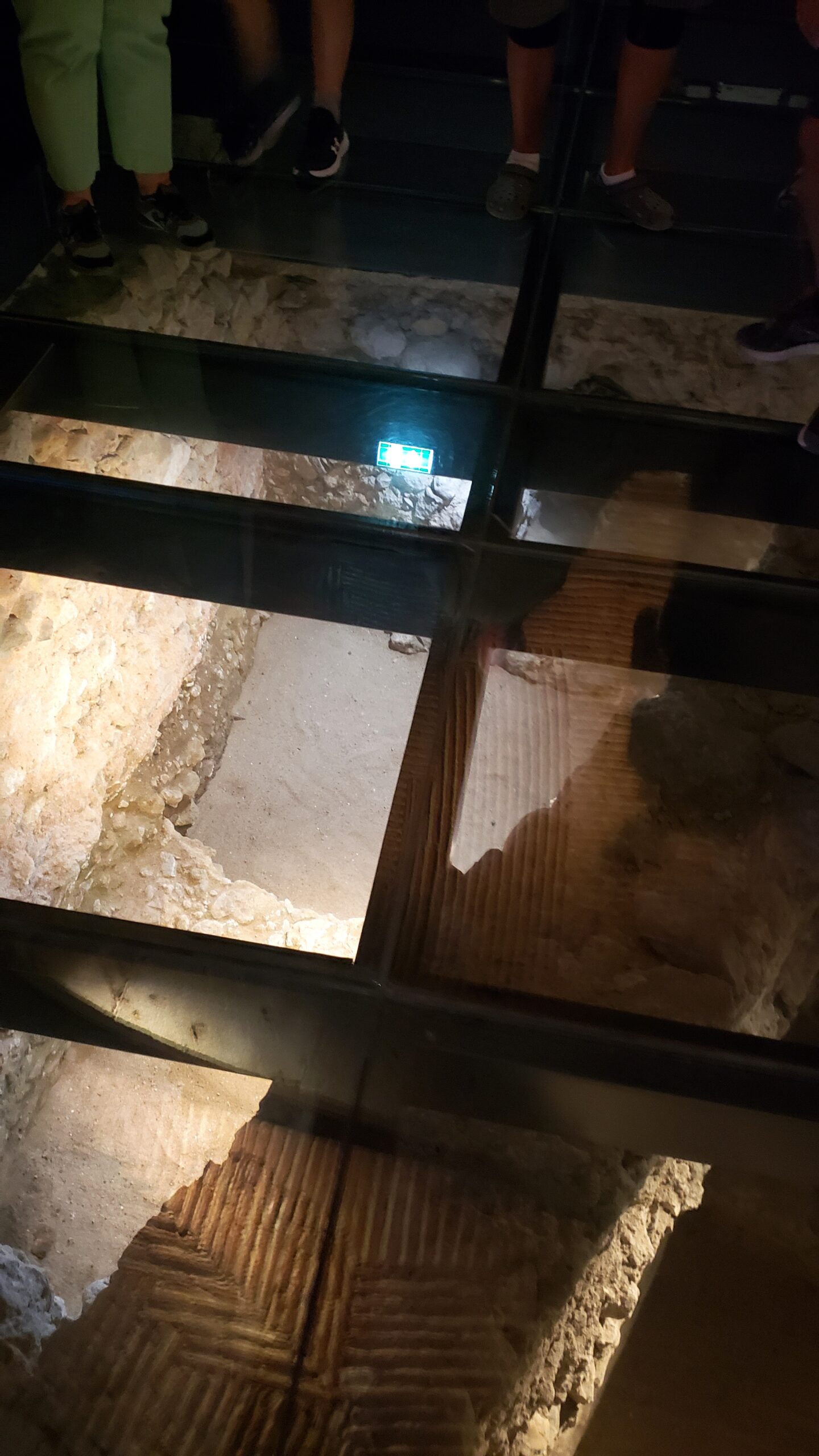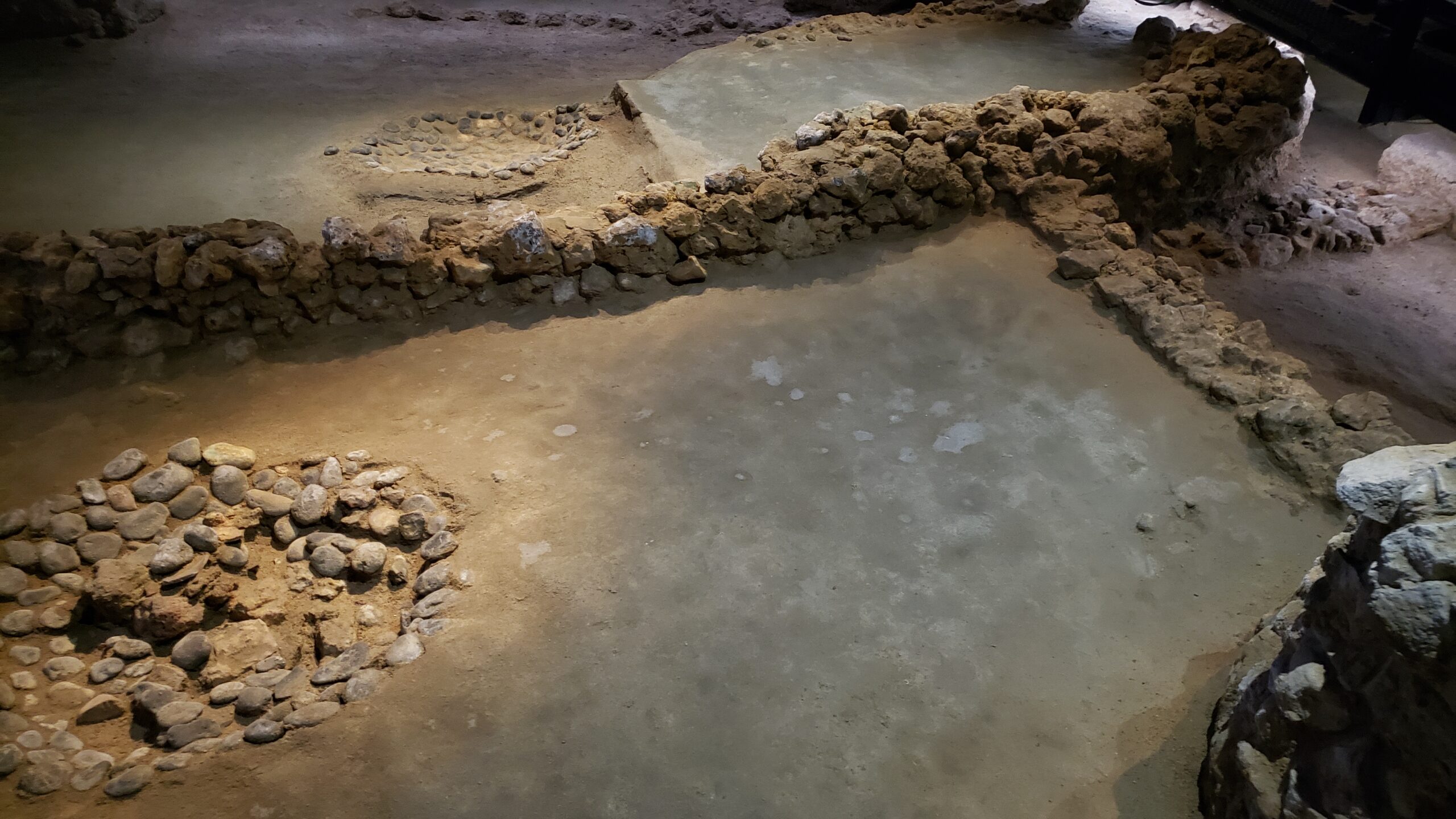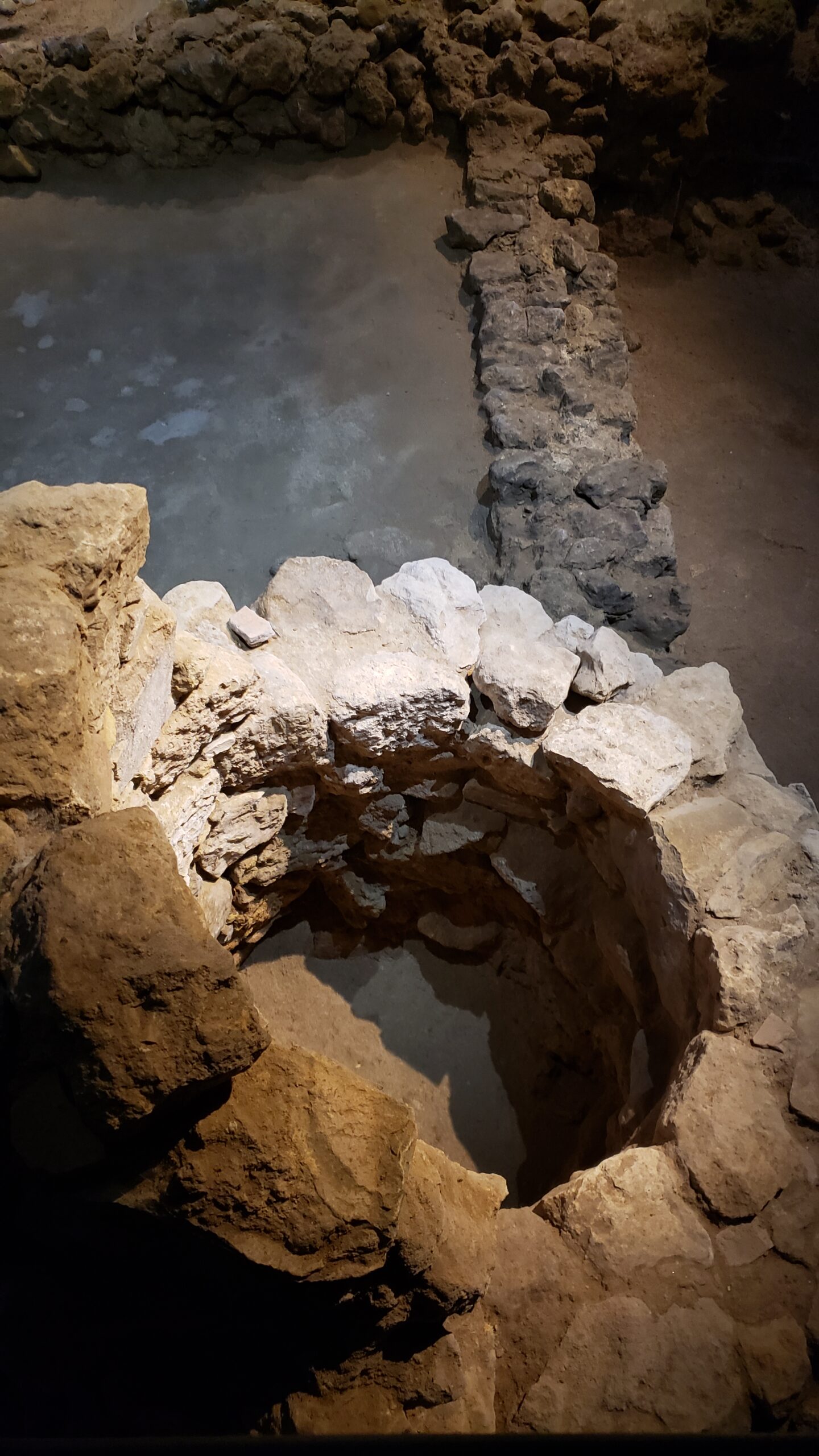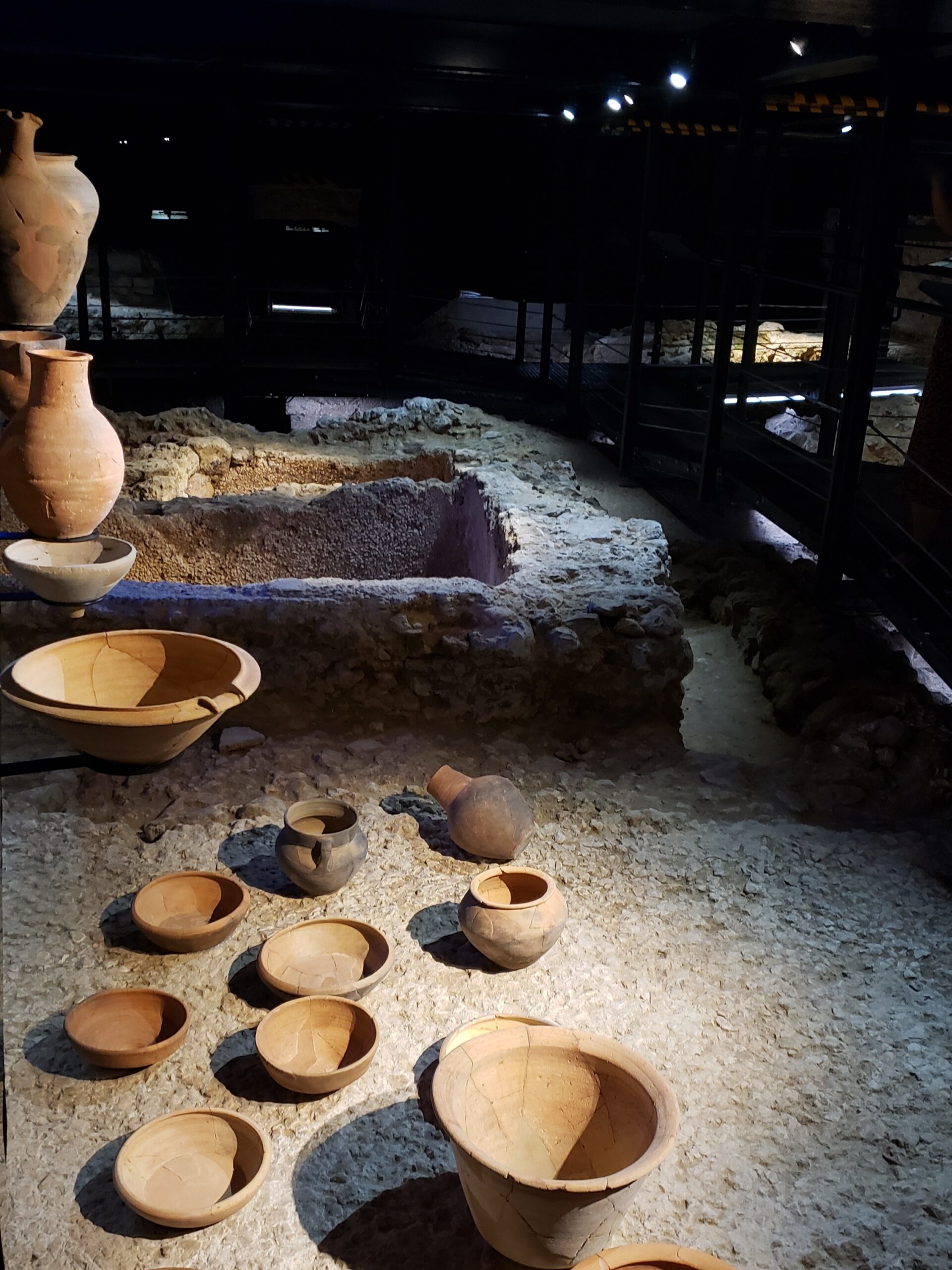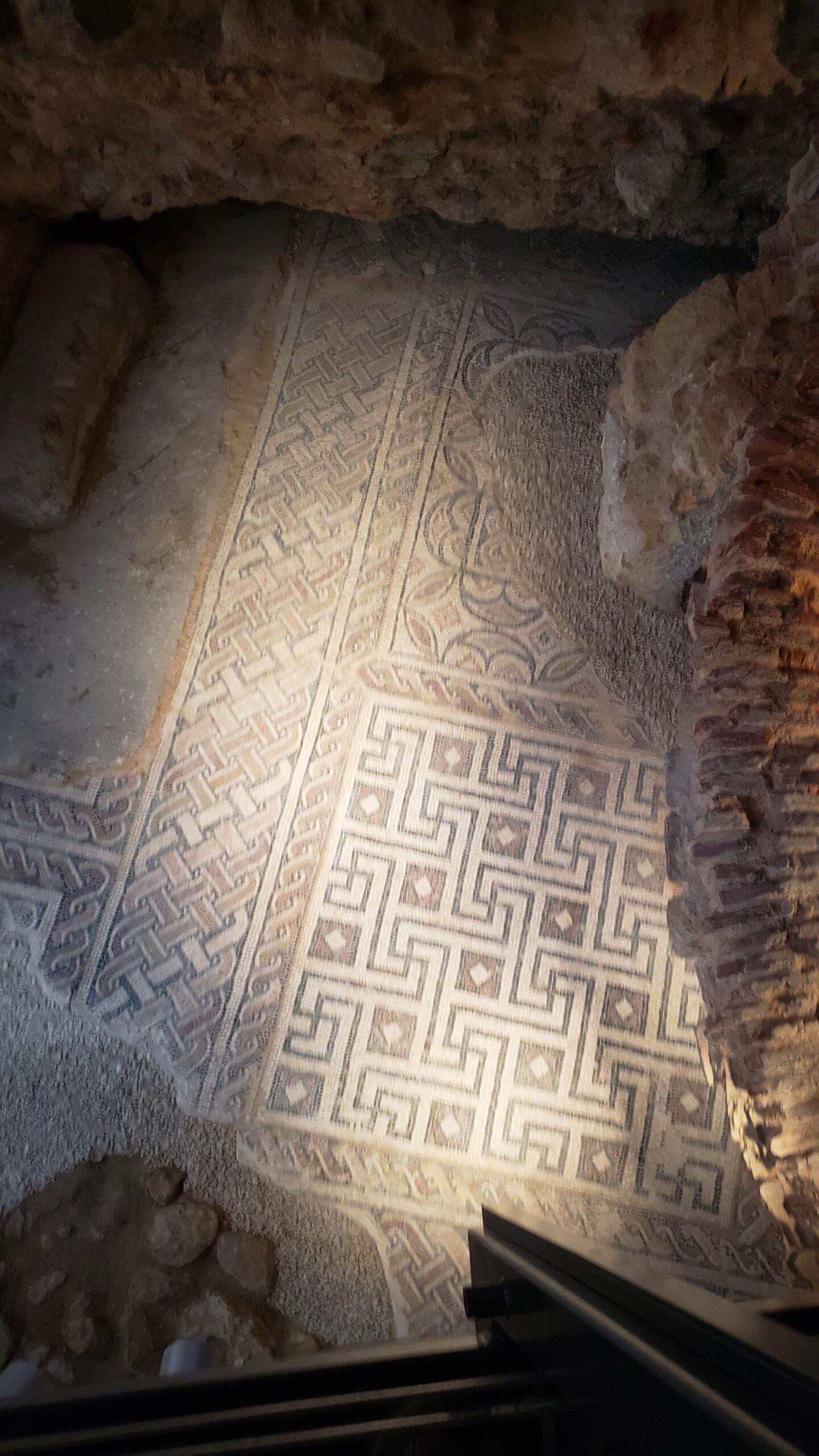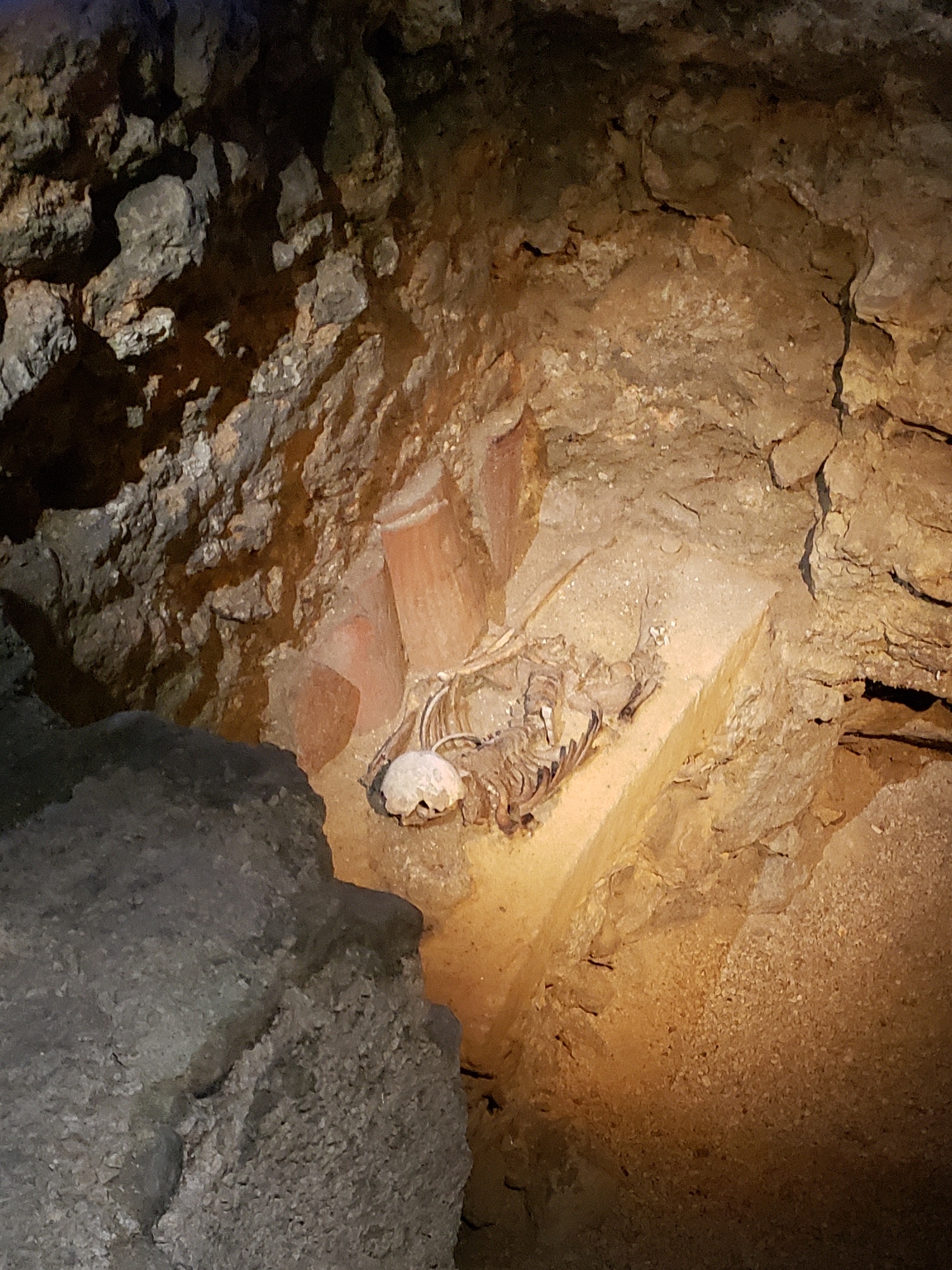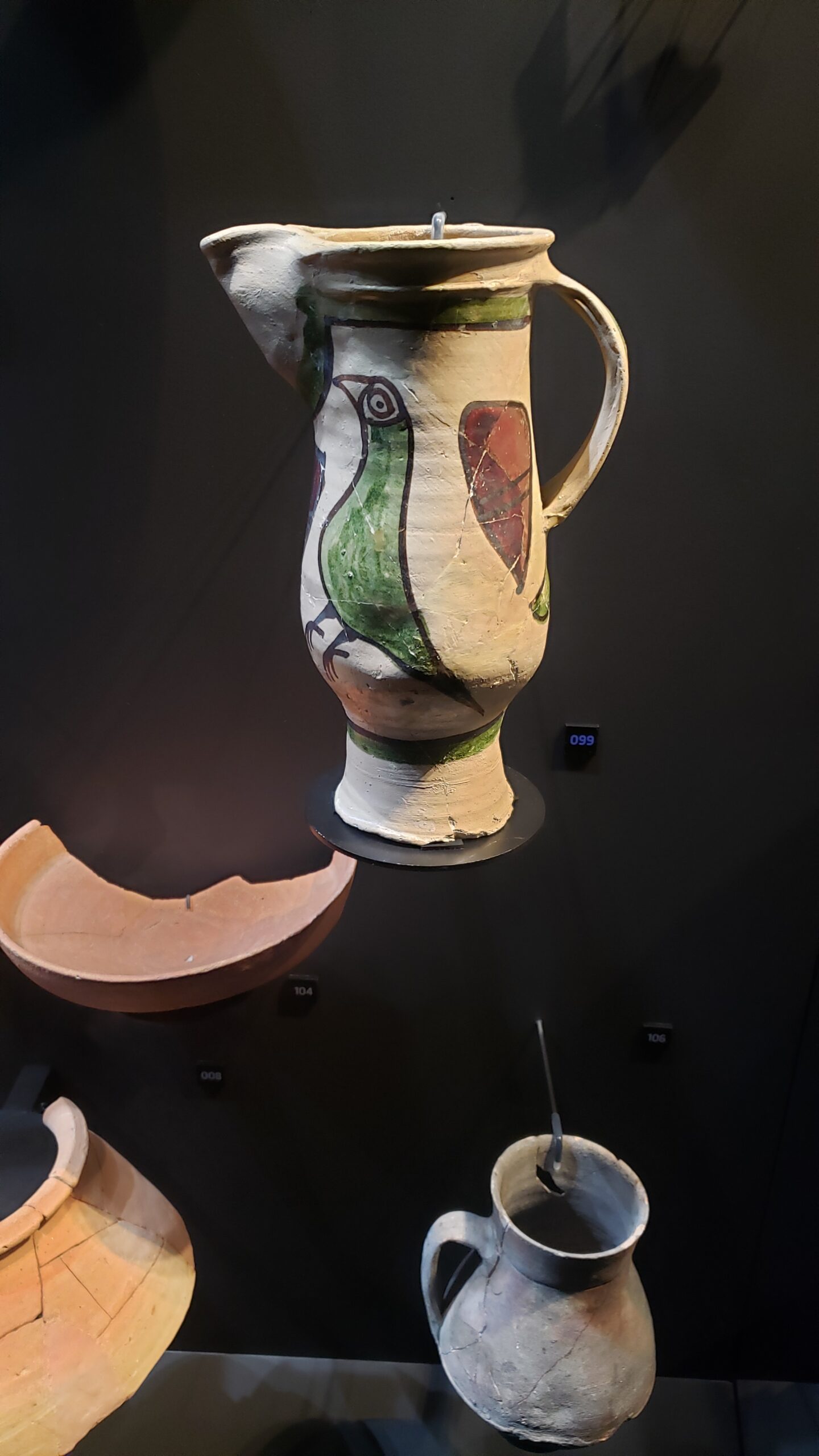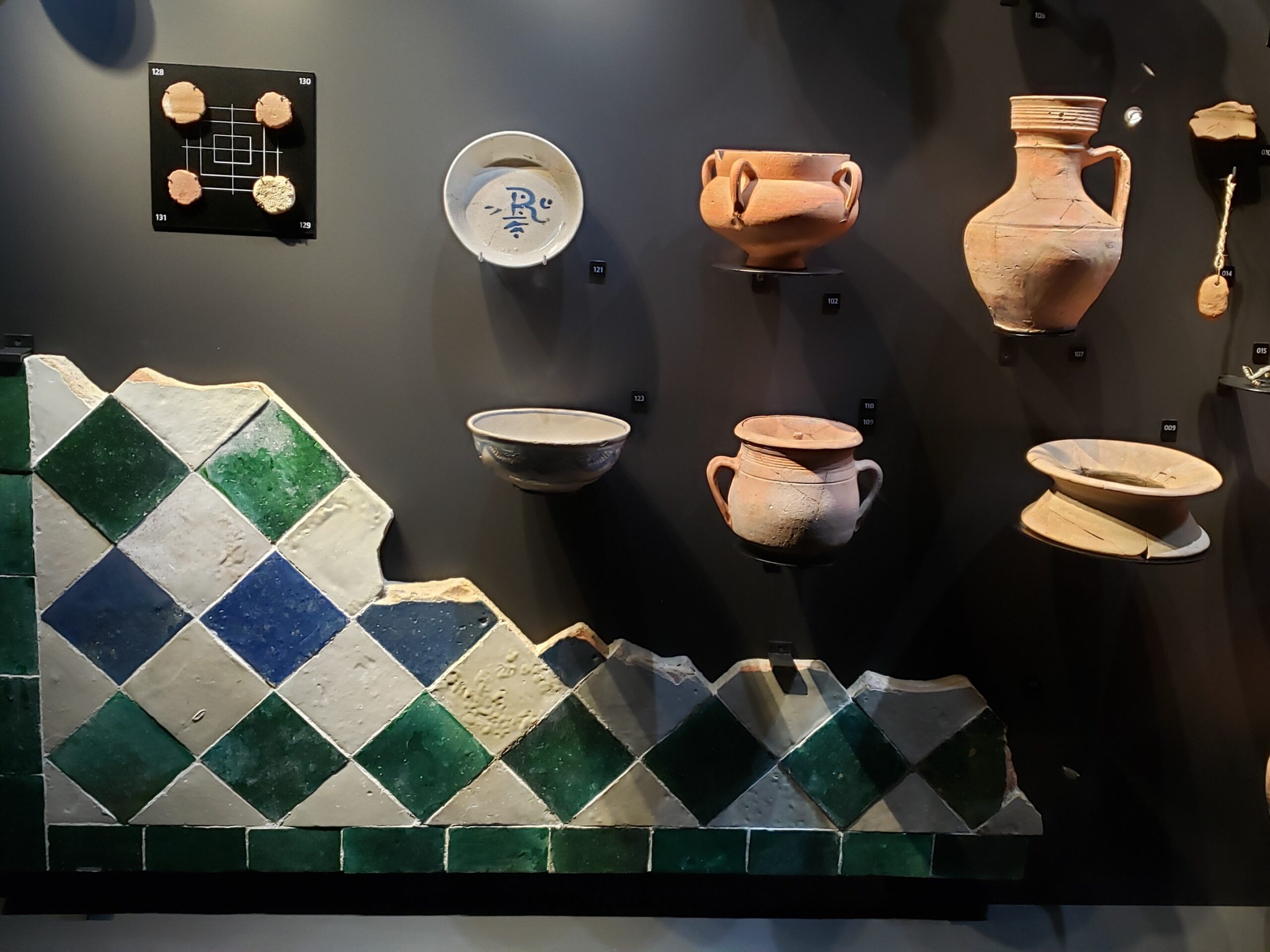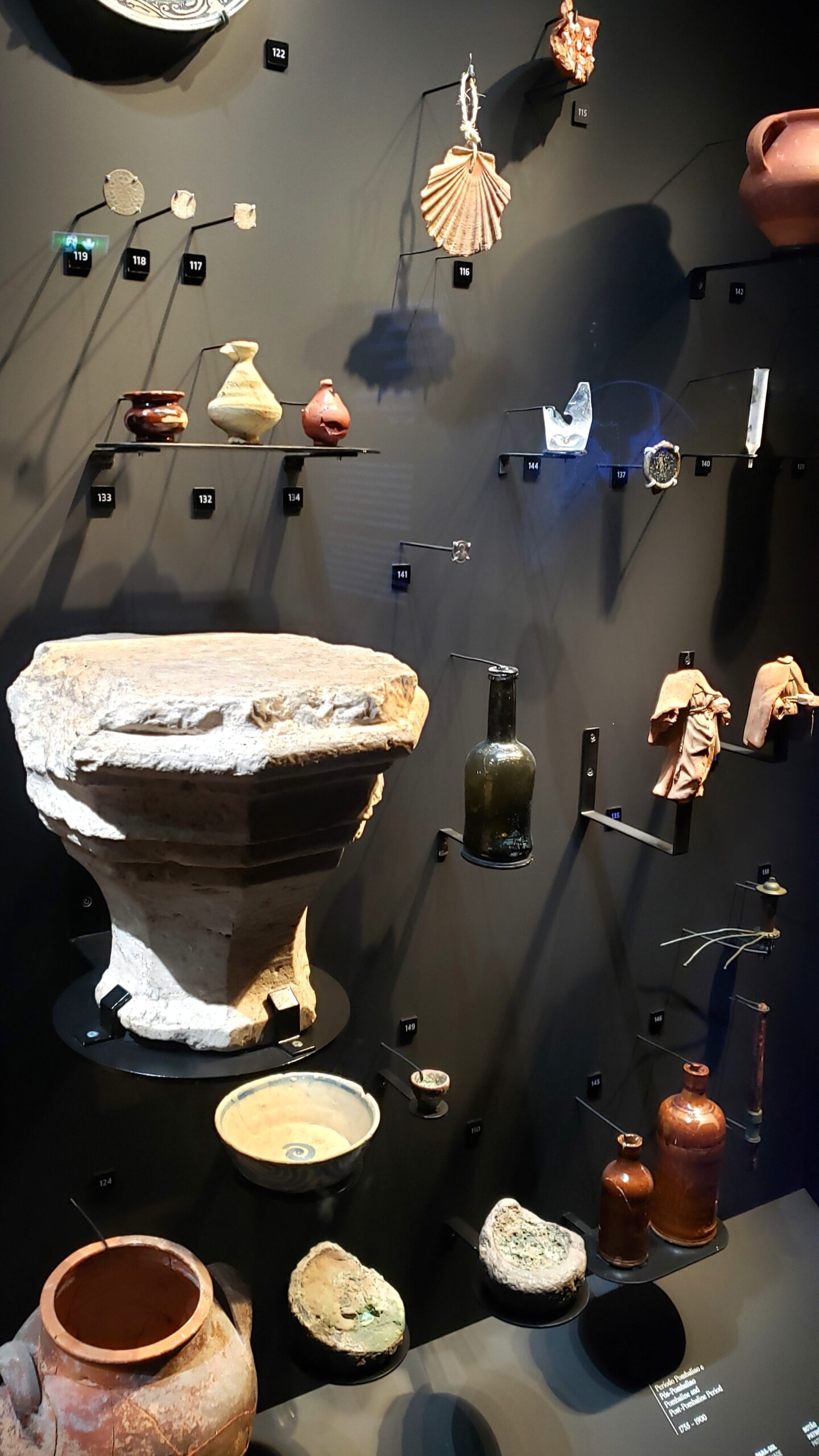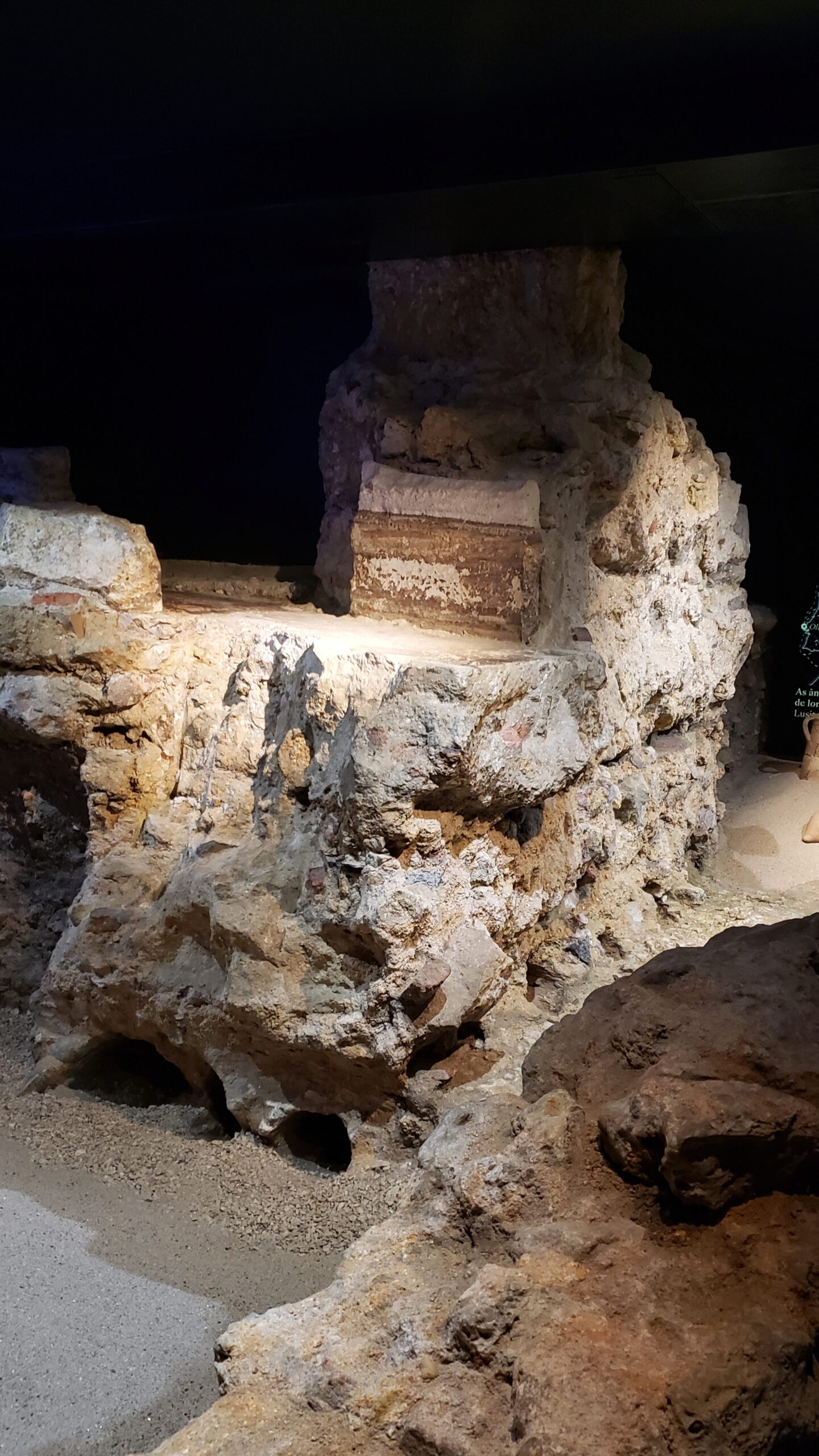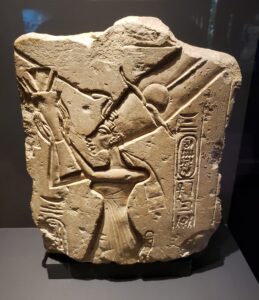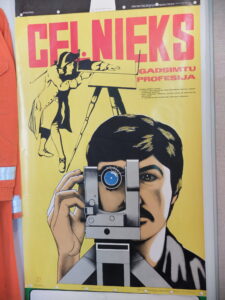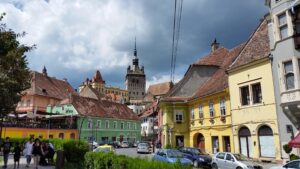Allis Ubbo, Olissipo, Olisipona, Al-Usbuma, Lixboa, Lisboa…each of these names for Lisbon represents a different period of occupation: Phoenicians, Romans, early Christians, Moors, later Christians, Pombaline.
And each period can be viewed in the physical remains at NARC (Núcleo Arqueológico da Rua dos Correeiros), the remarkable archeological site just a block from the celebratory arch between Rua de Augusta and Comercio plaza.
The one-hour guided tour shows ancient artifacts as well as very modern video displays so a visitor can trace the city’s wet and wild history across 4000 years. Even for long-term residents, it’s not to be missed.
The drama begins as we step out of the dark onto a glass floor that peers into the past, notably the Iron Age of the Phoenicians (when the town was Allis Ubbo). They lived here, along the valley floor of a river which is roughly now Rua Augusta, the main pedestrian corridor downtown.
Among the authentic artifacts on display from NARC’s four millennia story is this pot shard, made of old Lisbon clay from that river valley, displaying a Phoenician-era, Iron Age boat (Allis Ubbo).
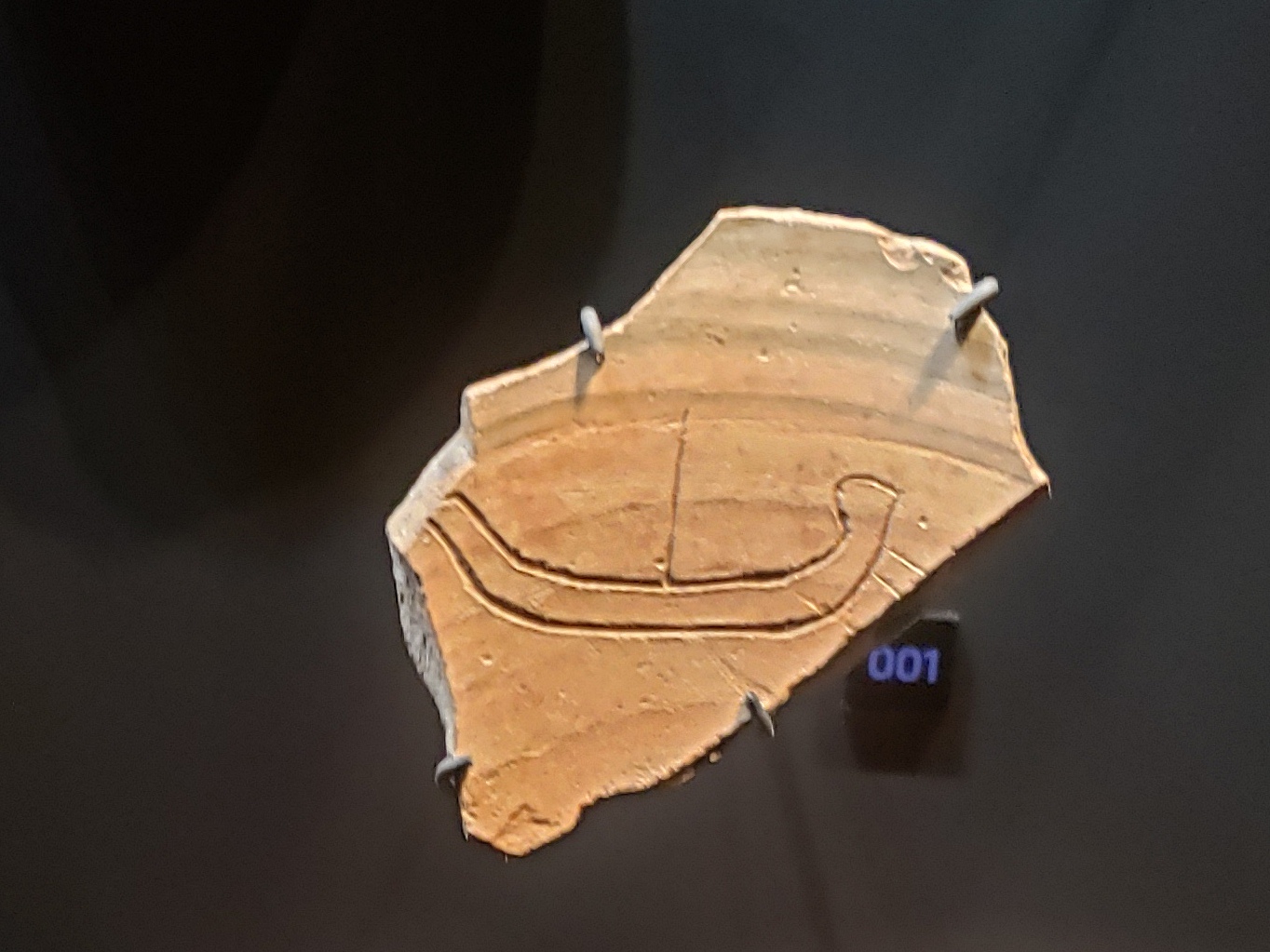
Descending from the glass floor, we are invited into the homes of the Phoenicians. You can see the simple stone foundations, with a rock-filled cooking hearth still present on the left. (Allis Ubbo)
A Roman era well. After the Phoenicians, the city’s hills, encircled by defensive walls, were considered safer havens so the valley became a burial site and then a factory for fish products. Up in the Lisbon hills, within the walls, the usual Roman amenities were located including a Roman Theatre whose remains are viewable at the Teatro Romano museum. (Olissipo)
During the early Roman period, this area was industrial (not a beehive of tourist activity as now). The valley was used to process the plentiful catch of fish into various pastes and sauces like garum for shipping across the Mediterranean in large amphora.
In the background of the photo are just a few of the tanks visible on the tour. In them, workers marinated the fish in salt for months before adding spices and oils to create the finished product.
Those bowls, made from local clay, are from the period. To the far right, you can see the tour walkway heading through the following centuries. (Olissipo)
After fish factory operations ended, the city constructed baths to take advantage of the river water. Here is a later Roman era mosaic around 300 – 400 AD, the flooring of the baths. At NARC, you can see the different rooms used for soaking in different temperatures. (Olissipo)
After the Roman occupation ended, the area became a burial site once again. The remains of part of a skeleton nestle amid the Roman tanks but dates from the early Medieval period around the 6th century. (Olisipona)
The Umayyad Moors who dominated the lower Iberian peninsula for four hundred years after 714 AD expanded out of the city walls that encircled the hills, developing this valley anew to house its growing population. From the valley clay, they produced decorative tiles, as well as clay plates and pots for both domestic use and olive oil shipping. Many examples like this water jug are displayed along the tour (Al-Usbuma).
The Christian Portuguese may have overcome the Moors, but they continued the Arabic tile-making tradition into today. This tile flooring comes from the Christian era after the 12th century. (Lixboa)
In the midst of items from early Christian and pre-Pombaline periods (Renaissance and Baroque, before the devastating 1755 earthquake) stands a hardy survivor of the earthquake: that dark bottle.
During the tour, you can also see support structures like these built after the earthquake for the Pombaline re-creation of the city supervised by the Marquês de Pombal. The stoneworks during the renewal just built atop the solid structures of the Roman era. Hidden elsewhere are examples of the wood truss supports that were designed like bridges so the new 18th century buildings could withstand the next earthquake. Those are still in use. (Lisboa)
(To enlarge any picture above, click on it. Also, for more pictures from Portugal, CLICK HERE to view the slideshow at the end of the itinerary page.)


